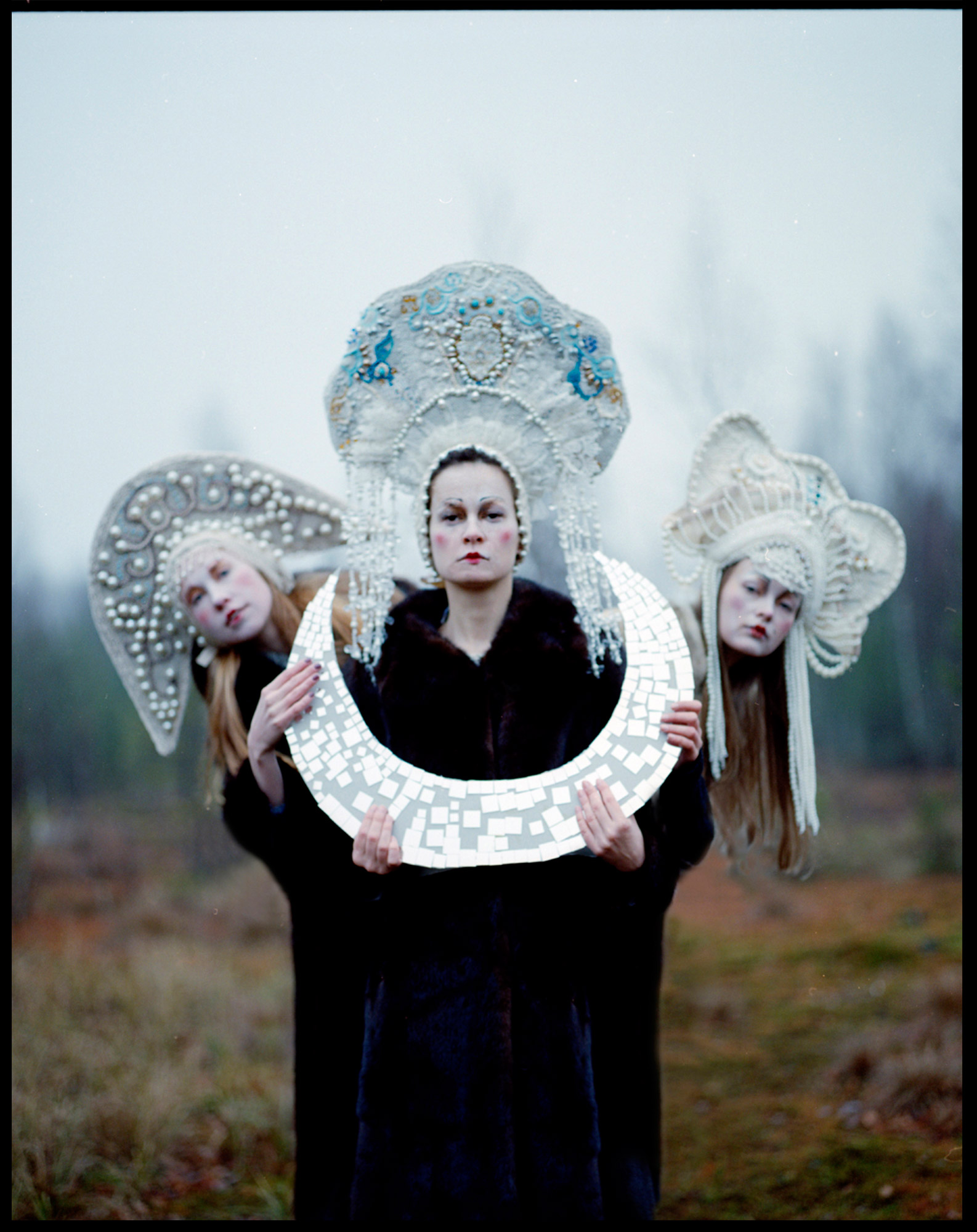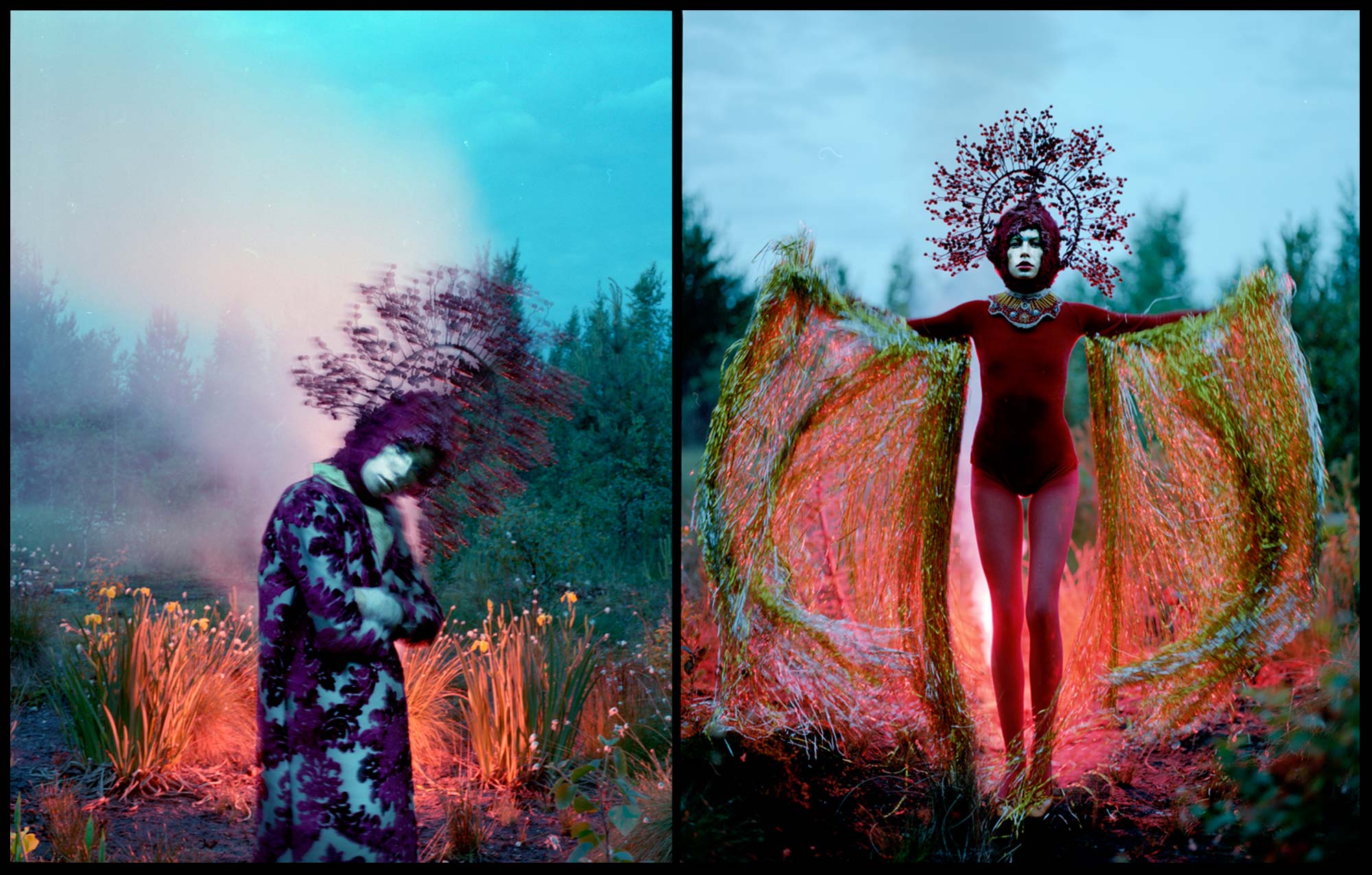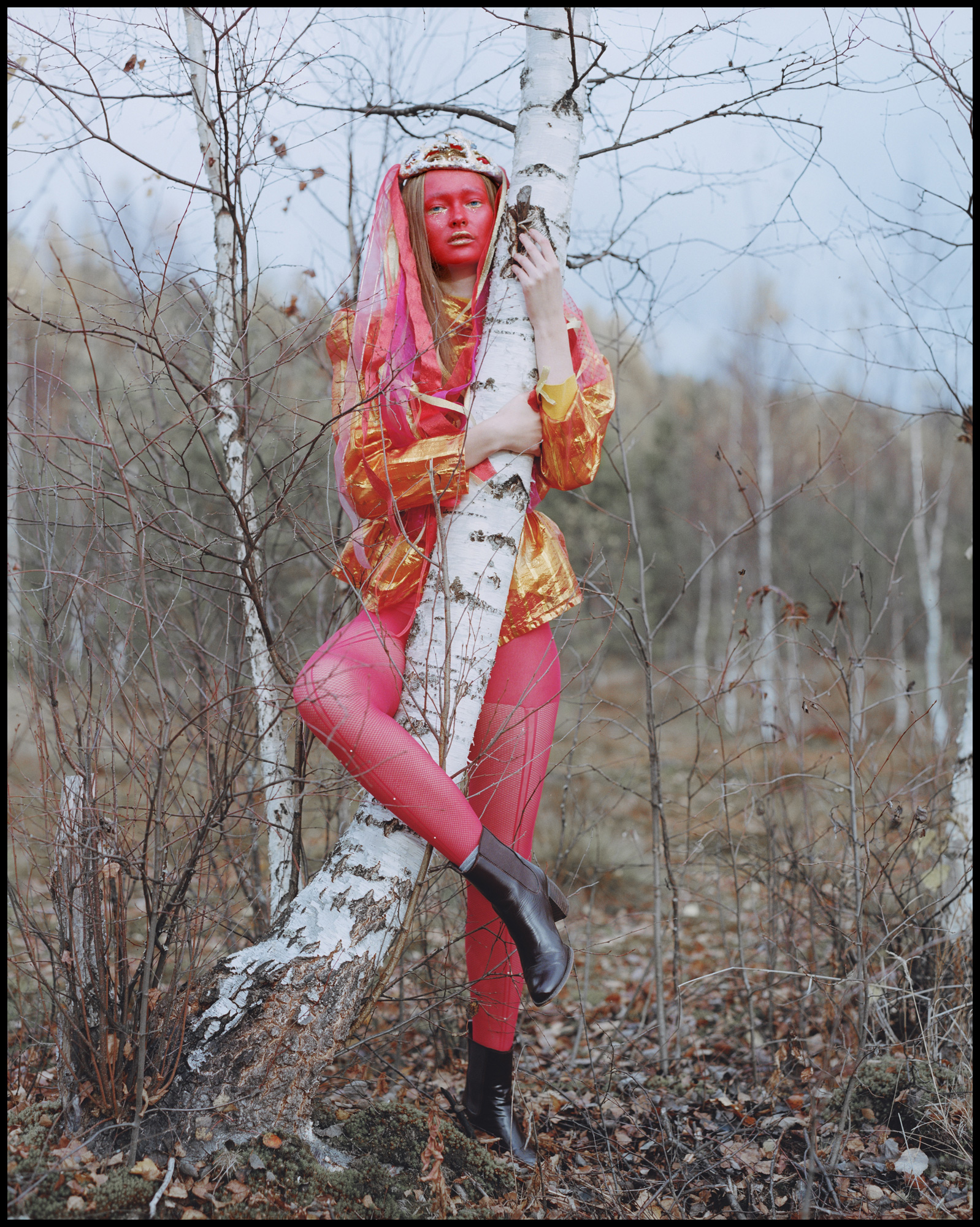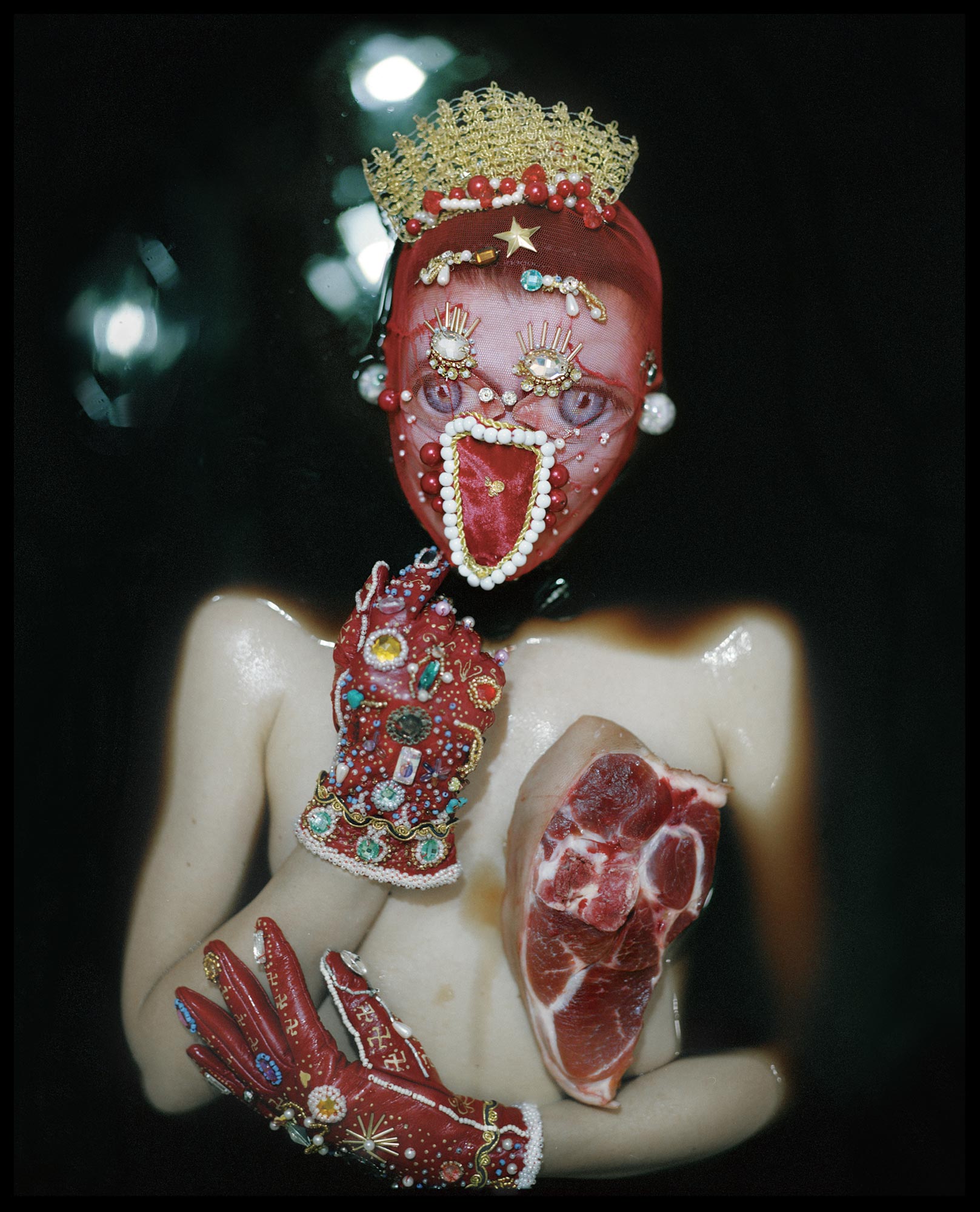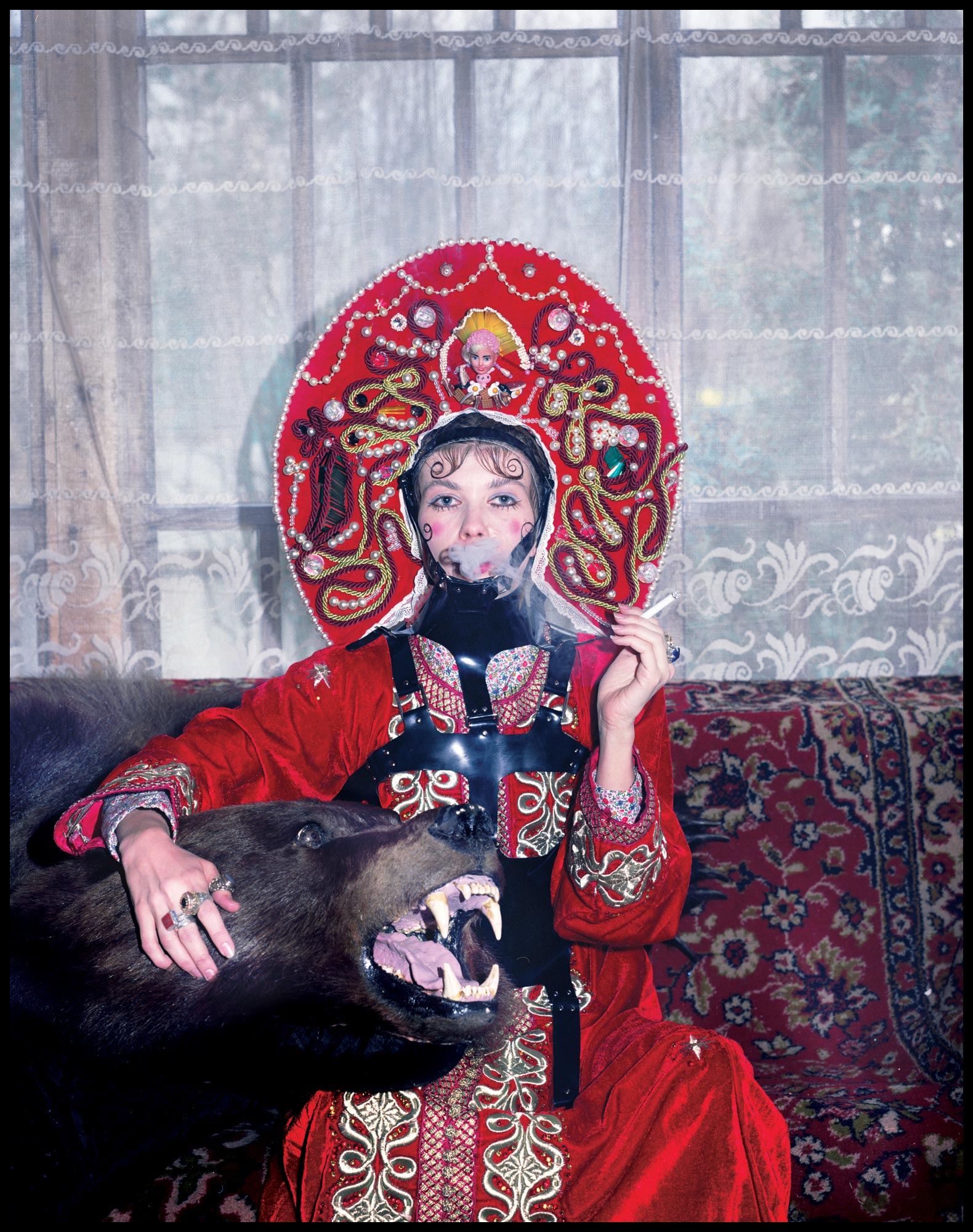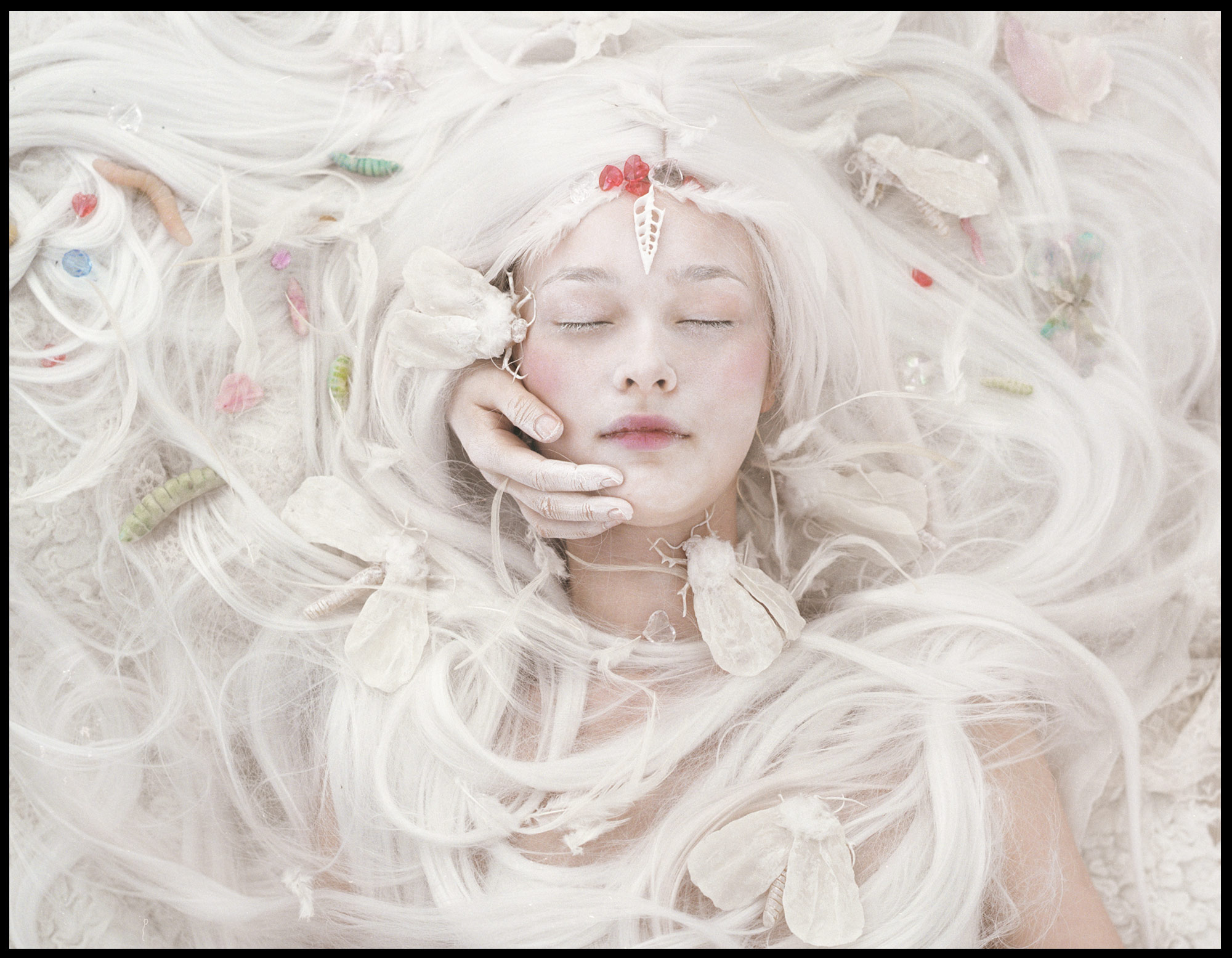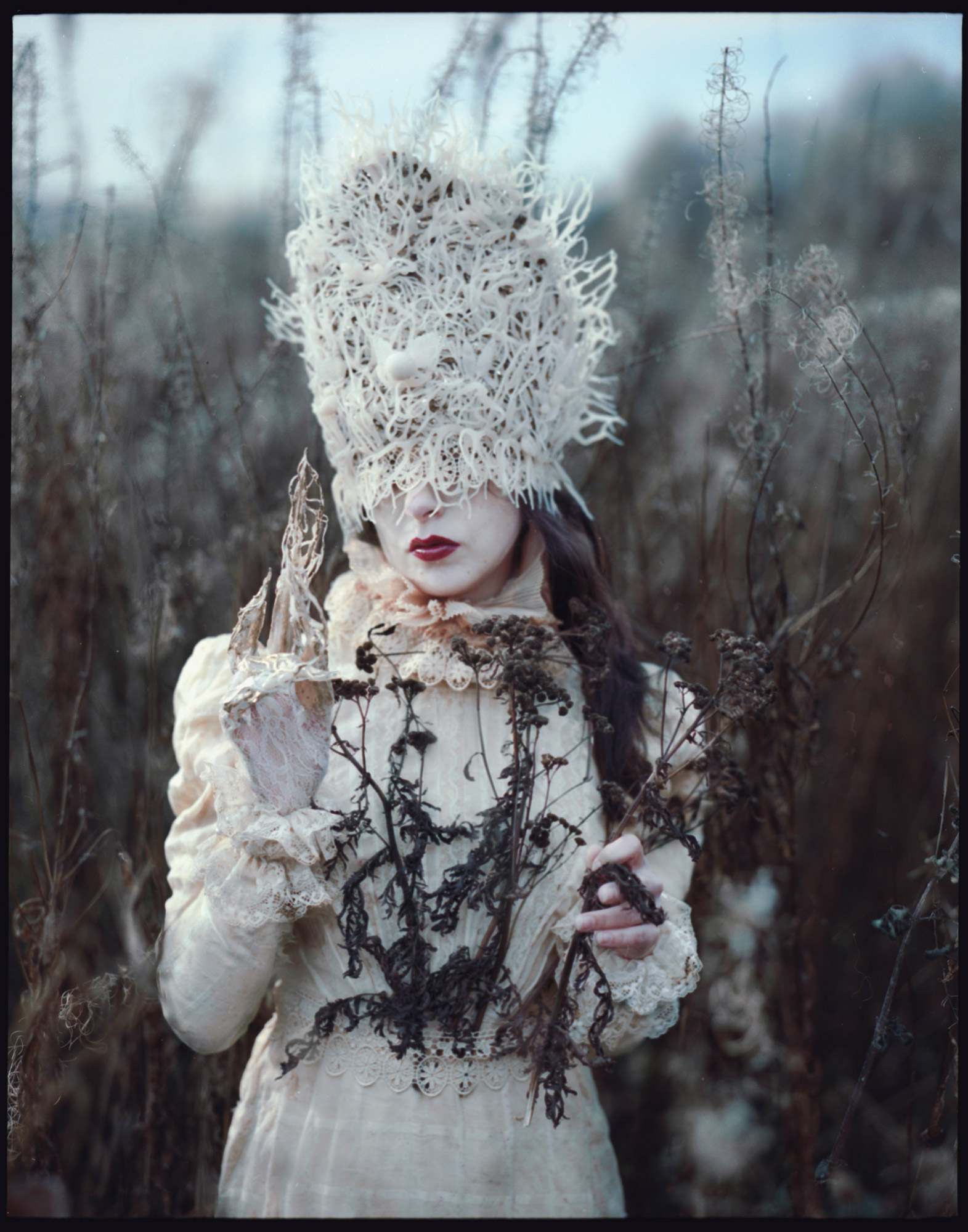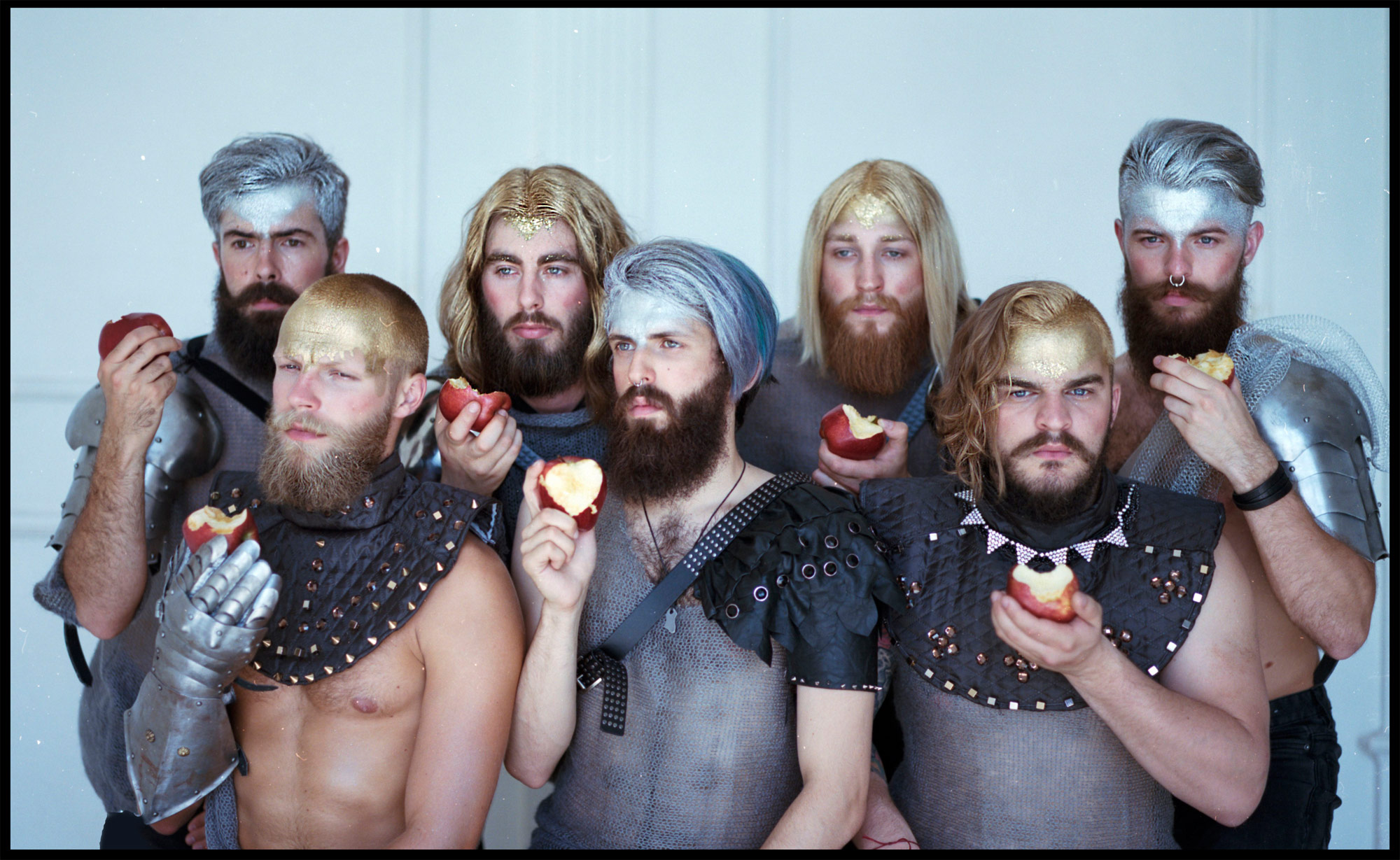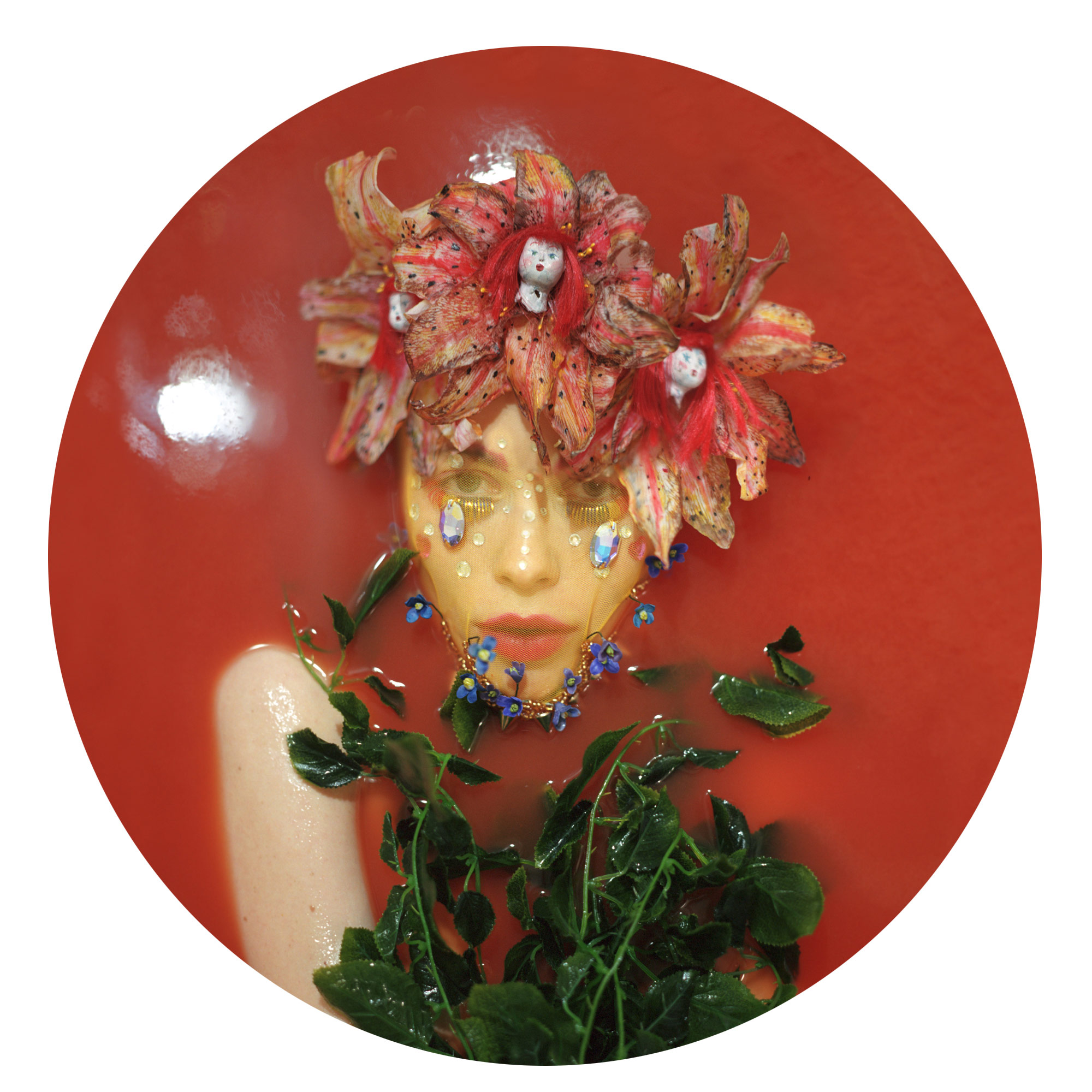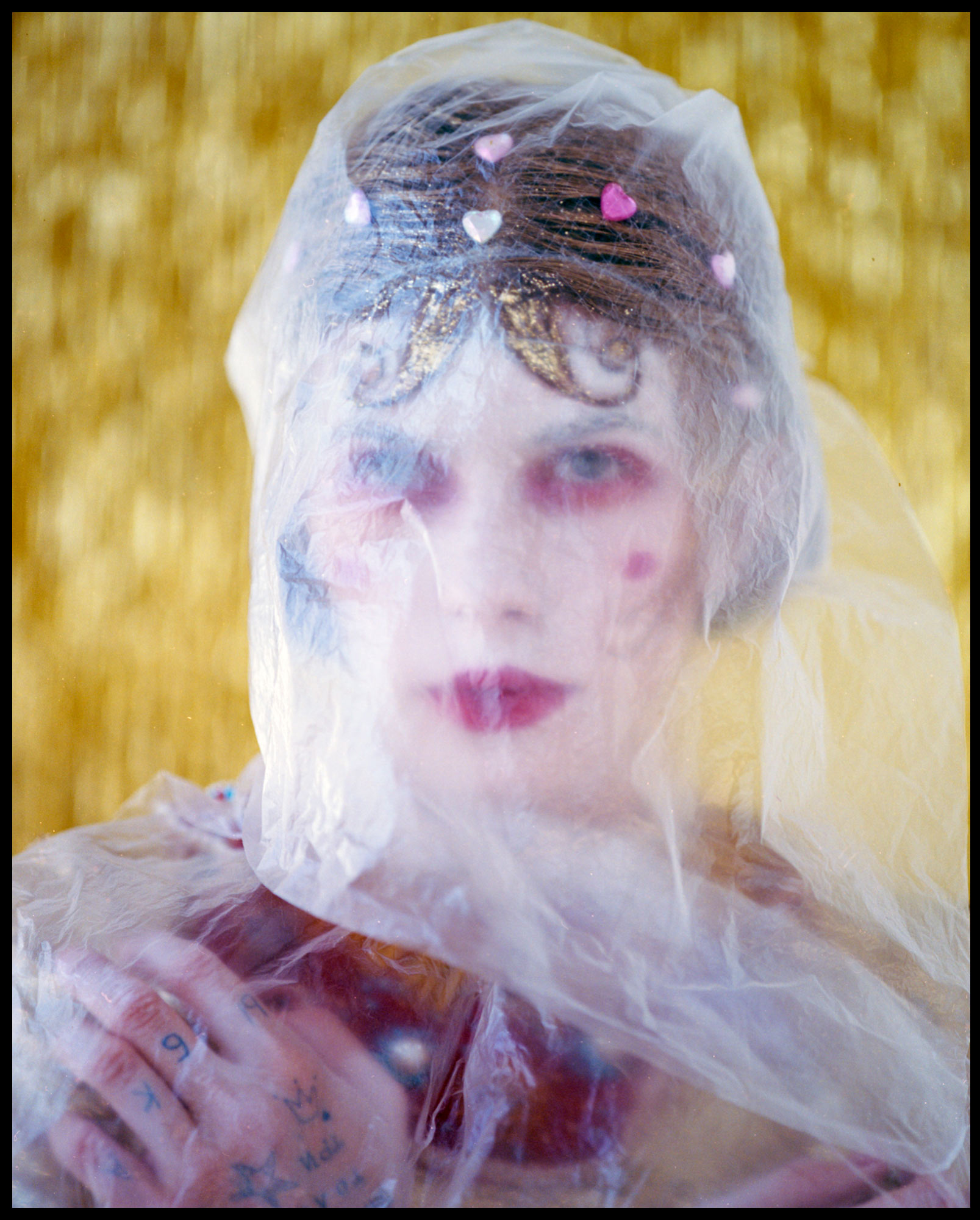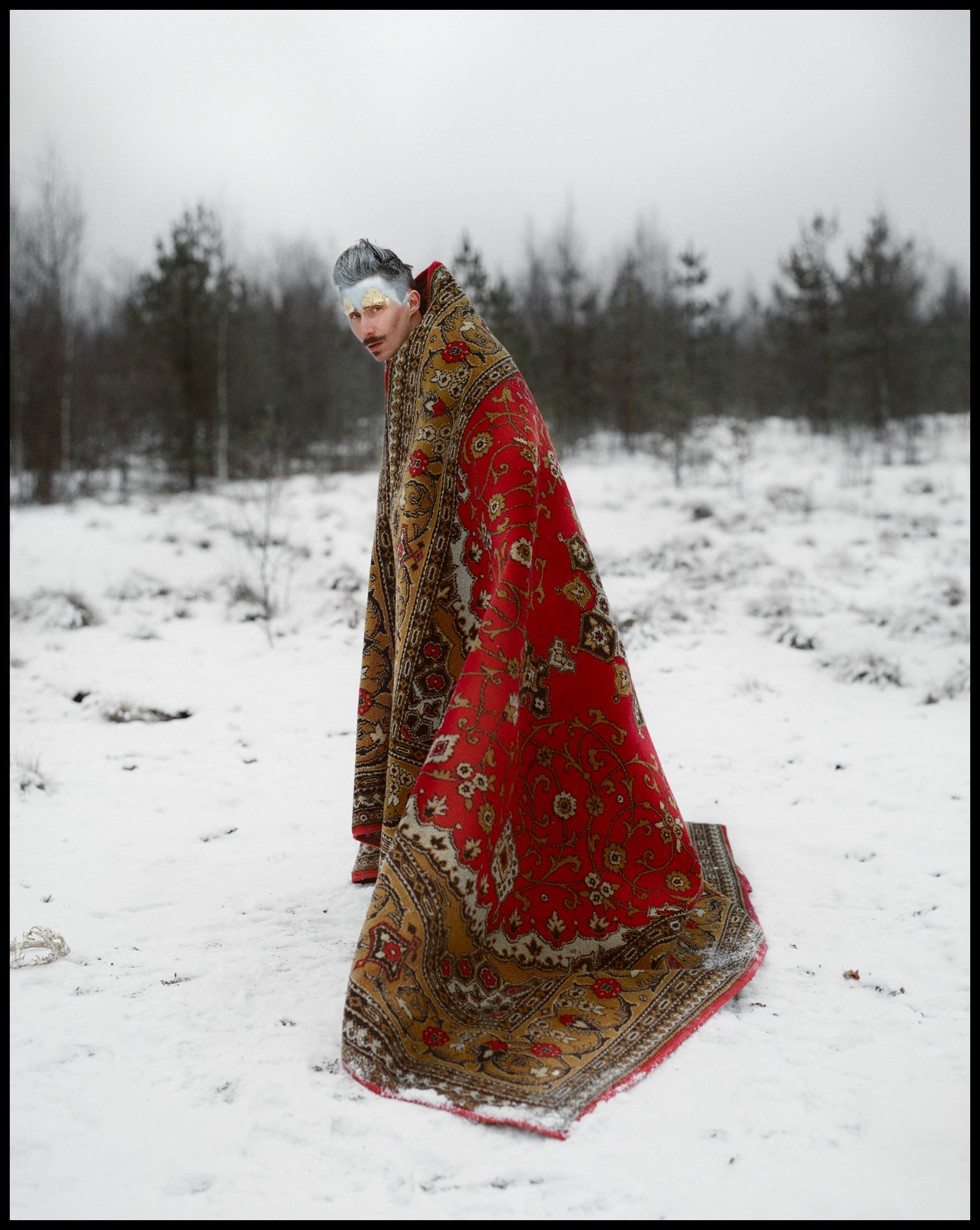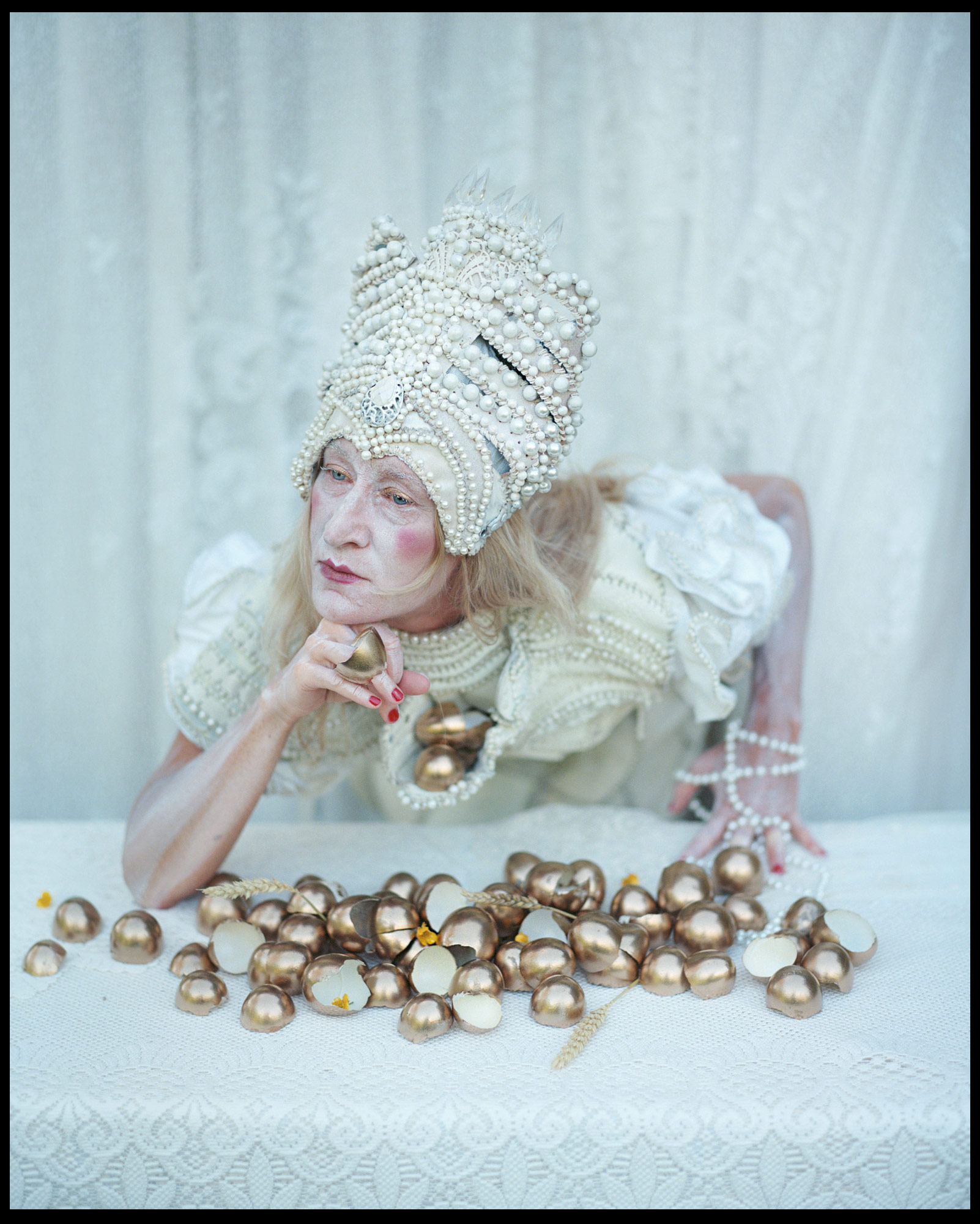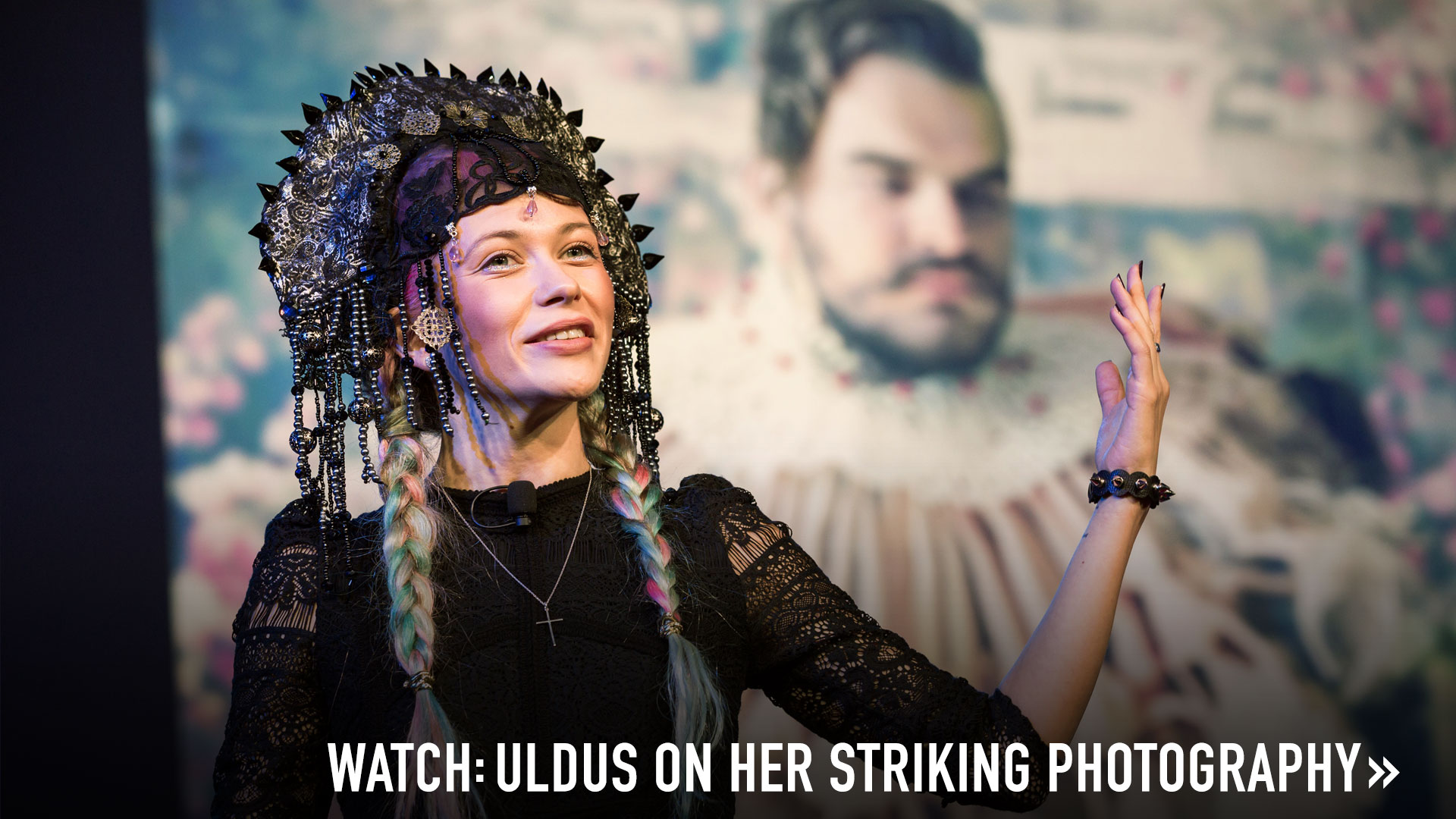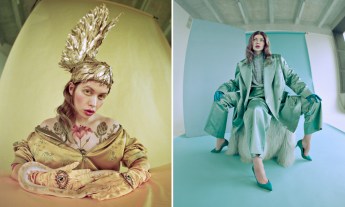Russian artist Uldus creates surreal photographic portraits of maidens, demons, heroines and gnomes
Russian artist Uldus (TED Talk: Wry photos that turn stereotypes upside down) makes fantastical and intricate photographic portraits of people — as they imagine themselves to be. In the process, she smashes stereotypes about modern Russian culture. In her latest series, Russ Land — a Slavic name for Russia — she’s diving into the past, deep into the magical world of pre-Christian Russian fairy tales and folklore. Exploring ancient pagan archetypes, femininity and magic, Uldus’ modern take on traditional tales provides a visual way into the complexity of Russian identity. She shares the stories behind the images.
Triglava (Three-headed Goddess)
The female heroines of Russian fairy tales are called tsarevna, who are under the protection of the moon, the cosmic body that rules femininity. This three-headed Slavic tsarevna represents the three elements that make up Earth — soil, water and air — and is in charge of protecting mountains, valleys and forests.
The Firebird (Zhar-ptitsa)
Tsarevnas are magical creatures, verging on shamanic. Shapeshifters, they can transform themselves into animals — frogs, snakes, birds. In this Russian version of the legend of the phoenix, the Firebird is a large bird of extraordinary beauty, enveloped in fire. Despite its magnificent appearance, it’s easy to capture the Firebird, and enlist her help to steal gold apples from the Tsar’s garden.
Fair Maiden
In Slavic culture, there are five stages of womanhood. The first, the Fair Maiden (also known as Red Beauty), is often represented by a young girl getting ready for a wedding. Red represents the modesty of girlhood and youth.
Mysterious Russian Soul
This image symbolizes many of the stereotypes Russians hold about themselves: oil baths, meat eating, gold, stones — as well as many of the cultural threads that make up who we are, a complex mix of cultures, religion and ethnicities. This image has been purchased for permanent collection in the Fabergé museum in St Petersburg.
Masha and the Bear
A little girl who loses her way in the forest stumbles across an izba (a log house), home to a family of bears. The bears attack Masha, but her quick-wittedness saves her from death. Here, our heroine sits smoking in victory over the bears, her ironic attitude announcing that “Everything is good in Russia!”
Milky River and Kisel Shores
The hidden and magical land of beauty often described in Slavic fairy tales features rivers made of milk. Beautiful tsarevnas are thought to be hiding here, sleeping. If a traveler should somehow trespass, the tsarevna turns him into a moth, a prisoner of its attraction to light.
The Soul of Forest
Slavic pagans were animists, worshiping nature gods. Often, the heroes of Russian fairy tales speak with the forest itself, asking for help as though it had a soul. This image is a physical representation of the Forest’s Soul. I make many of the costumes myself — including the hand-embroidered, jewel-laden kokoshniks, traditional Russian headdresses.
Seven Brothers & the Dead Tsvarena
In the Russian version of Snow White, her companions are not gnomes but handsome, tall men — brothers who live in the forest and protect it.
The Scarlet Flower
This is based on a Russian folk story about a young man bewitched into a beast and a young maiden who removes the spell through her sincere love — a version of Beauty and the Beast. My interpretation illustrates struggle, love and romanticism, and the fear of being misunderstood.
Gold Web
In the folk legend “The Tale of the Fisherman & the Gold Fish,” a fisherman catches a magical talking golden fish. The golden fish grants him three wishes, which he declines. But when his wife finds out, she asks the fish for an excess of treasures and power. Angered by the wife’s selfishness, the Gold Fish returns the old couple to poverty — making the old fisherman happy, as he never wanted anything for himself.
Petrushka
Petrushka, a harlequin, is the primary comic character in Russian puppetry. With only four fingers on each hand and a diabolical grimace, Petrushka is an allegory of the alienation of modern society, with its false smiles, heartlessness and negative emotions.
Ivan the Fool
In the Slavic fairy tale “Ivan the Fool,” the durak, or fool, can speak with nature — with the forest, the wind, the animals — which comes to his aid when needed. Fool in name only, Ivan ends up with the most beautiful tsarevna, a castle, food for the whole world — simply by following what nature tells him. The root of this word — “du” — means someone who follows, while “ra” is the pagan god of the sun. So a durak is one who follows the sun, a visionary.
Ryaba the Hen
The first fairy tale Russian parents usually tell their toddlers, Ryaba the Hen tells of an old couple and their hen that lays golden eggs — which doesn’t bring them happiness. Here, we see a table full of golden eggshells, and a sad Ryaba in human form.

